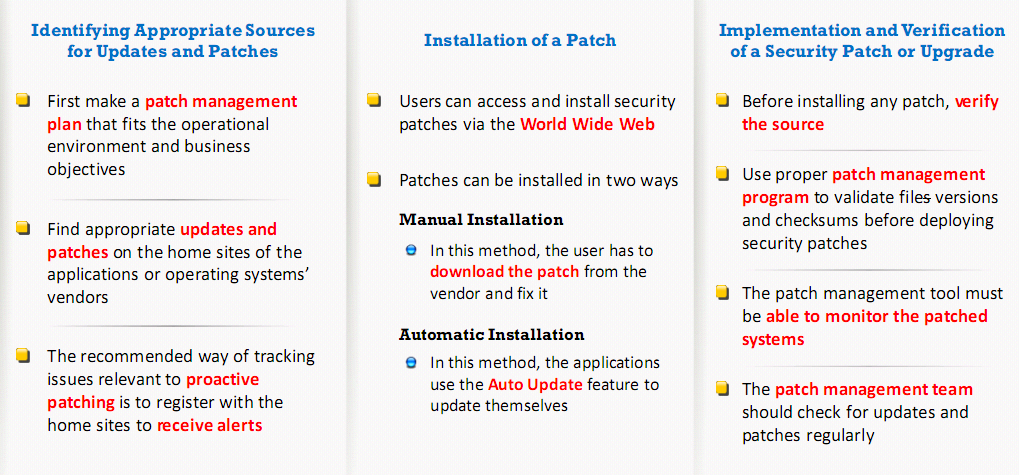Hacking Web Servers
Web Server Concepts
Web Server Operations
- A web server is a computer System that stores processes and delivers web pages to clients via HTTP
- Components of a Web Server
- Document Root
- Store critical HTML files related to the web pages of a domain name that will be served in response to the request
- Server Root
- Stores servers configuration error executable and log files
- Virtual Document Tree
- Provides storage on a different machine or disk after the original disk is filled up
- Virtual Hosting
- Technique of hosting multiple domains or websites on the same server
- Web Proxy
- Proxy server that sits in between the web client and web server to prevent IP blocking and maintain anonymity
- Document Root
Open Source Web Server Architecture
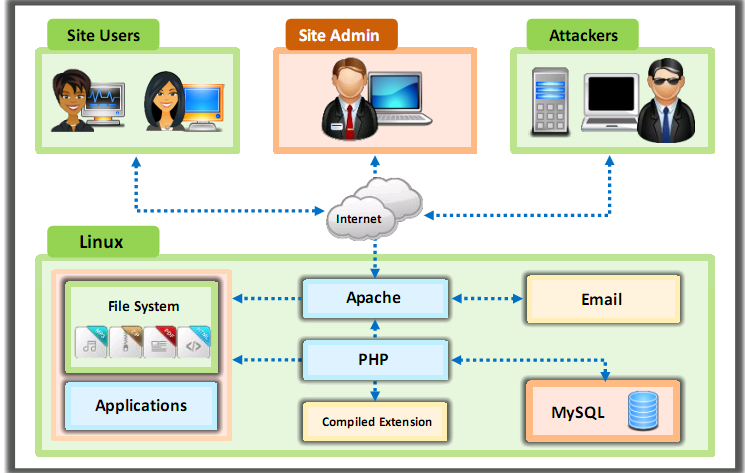
IIS Web Server Architecture
- IIS for windows server is a flexible secure and easy to manage web server for hosting anything on the web
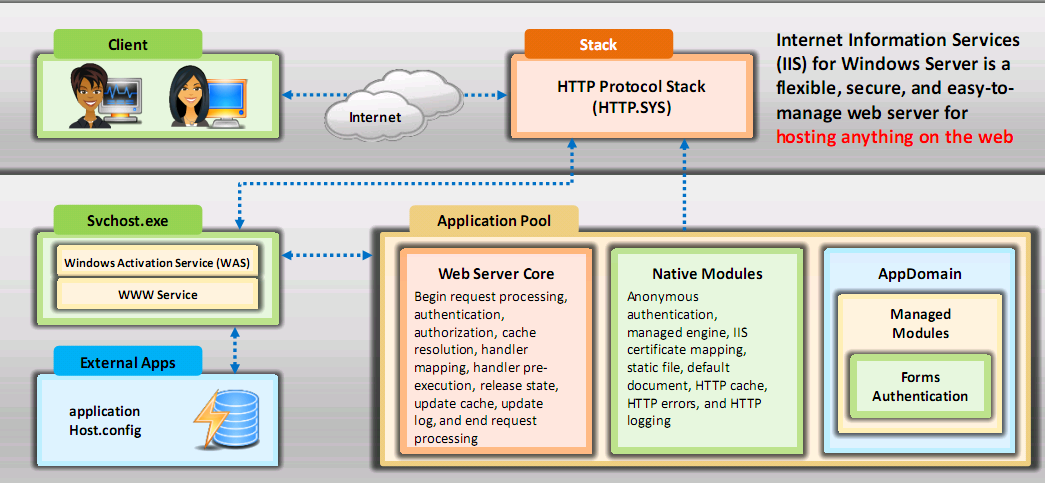
Web Server Security Issues
- Attackers usually target software vulnerabilities and configuration errors to compromise web servers
- Network and OS level attacks can be well defended using proper network security measures such as firewall IDS
- Web servers are accessible to the internet which makes them more vulnerable
Why Web Servers are Compromised
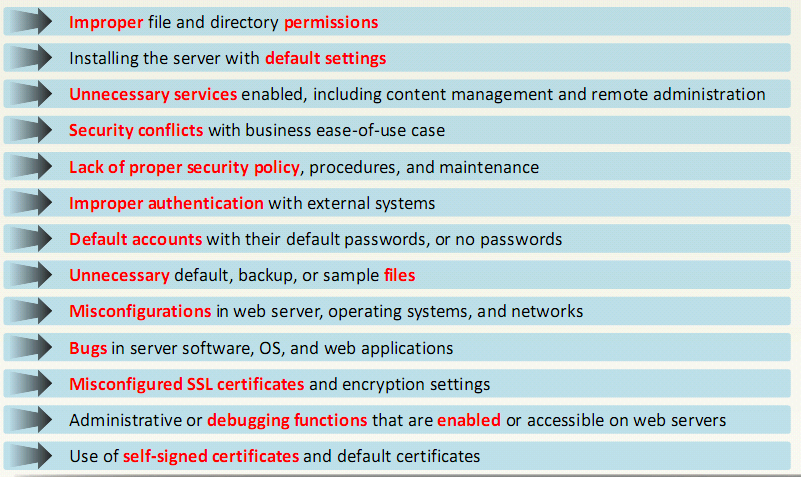
Impact of Web Server Attacks
- Compromise of user account
- Website defacement
- Secondary attack from the website
- Root access to other applications or servers
- Data tampering and data theft
Web Server Attacks
DoS/DDoS Attacks
- Attackers may send numerous fake request to the web server which results in the web server crashing or becoming unavailable to the legitimate users
- Attacker may target high profile web servers to steal user credentials
DNS Server Hijacking
- Attacker compromises DNS server and changes the DNS settings to that all the request coming towards the target webserver are redirected to the attacker
DNS Amplification Attack
- Attacker takes advantage of DNS recursive method of DNS redirection to perform DNS amplification attack
- Attacker uses compromised PCs with spoofed IP address to amplify the DDosS attacks on victims DNS server by exploiting DNS recursive method
Directory Traversal Attack
- Attackers use ../ to access restricted directories outside of the web server root directory
- Attacker can use trail and error method to navigate outside of the root directory and access sensitive information in the system
Man in the middle / sniffing attack
- MITM attack allows an attacker to access sensitive information by intercepting and altering communications between and end user and web server
- Attacker acts as a proxy such that all the communication between the user and the web server passes through the attacker
Phishing Attacks
- Attackers tricks user to submit login details for website that looks legitimate but it redirect to the malicious website hosted on the attacker web server
- Attacker steals credentials and uses them to impersonate the user
- Attack can then perform malicious operations
Website Defacement
- Intruder maliciously alters the visual appearance of a web page
- Defacing pages expose visitors to some propaganda
- Attackers us variety of methods such as MYSQL injection to access a site in order to deface it
Web Server Misconfiguration
- Server misconfiguration refers to configuration weaknesses in web infrastructure that can be exploited to launch various attacks on web servers such as directory traversal server intrusion and data theft
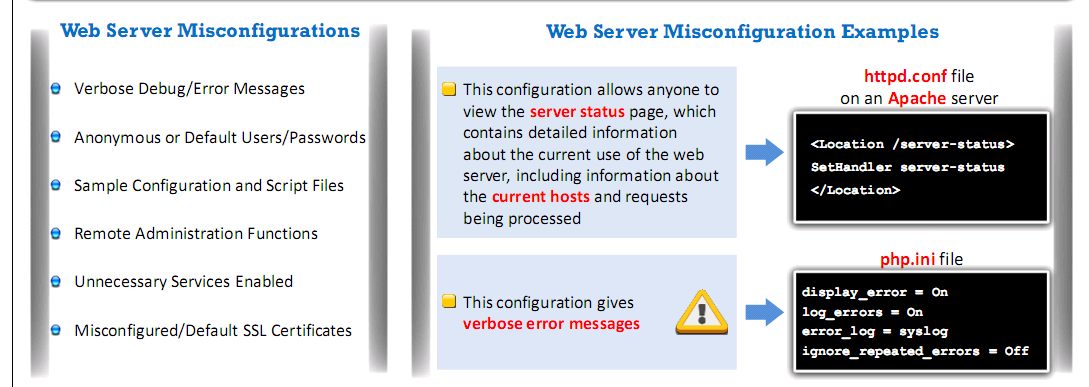
HTTP Response splitting attack
- Involves adding header response data into the input field so that the server splits the response into two responses
- The attacker can control the first response to redirect the user to a malicious website whereas the other responses will be discarded by the web browser
Web Cache Poisoning Attack
- Attacks the reliability of an intermediate web cache source
- Attacker swaps cached content for a random URL with infected content
- Users of the web cache source and unknowingly use the poisoned content instead of the true content
SSH Brute Force Attack
- SSH protocols are used to create an encrypted SSH tunnel between two hosts in order to transfer un-ecrypted data over and insecure network
- Attackers brute force the SSH login
- SSH tunnels are used to transmit malware and other exploits to victims without being detected
Web Server Password Cracking
- Attacker tries to exploit weakness to hack well chosen passwords
- Many hacking attempts start with password cracking to prove to the web server that you are a trusted user
- Password can be cracked manually or by using automated tools
Web Application Attacks
- Parameter/Form tampering
- The attacker manipulates the parameters exchanged between client and server in order to modify application data
- Cookie Tampering
- Sends a modified cookie form the client side to the server
- Unvalidated Input and File injection Attack
- Unvalidated input and file injection attacks are performed by supplying and Unvalidated input or by injecting files into a web application
- SQL Injection Attacks
- SQL injection attacks exploits the security vulnerability of a database for attacks.
- Attacker injects malicious SQL code into a string that is later sent to the SQL server by the web server
- Session Hijacking
- Attack in which the attacker exploits steals, predicts and negotiates the real valid web session
- Directory Traversal
- Attackers can access restricted directories and execute commands outside the web servers root directory by changing the URL
- DoS
- Overwhelms the server and causes it to stop responding
- Cross-Site Scripting (XSS)
- Attackers inject HTML tags or scripts into the target website
- Buffer Overflow
- Attackers flood the application with too much data which in turn cause a buffer overflow attack
- Cross-Site Request Forgery (CSRF)
- Attacker exploits the trust of an authenticated user to pass malicious code or commands to the web server
- Command Injection
- Hackers alter the content of the web page by using HTML code and by identifying the form fields that lack valid constraints
- Source code Disclosure
- Misconfiguration allow an attacker to access source information of the web application
Web Server Attack Methodology
Information Gathering
- Collecting information about the target company
- Use whois to look up information
- Roboots.txt File
- Contains the list of the web servers directories and files
- Attackers can use this to retrieve sensitive information such as the root directory structure, content management system information
Web Server Footprinting
- Banner Grabbing
- Gathers valuable system level data like account details OS software version servername and database scheme
- Telnet can be used for banner grabbing
- Enumerating webserver information using NMAP
- Nmap scripting can be used to get information off web servers
Website Mirroring
- Nmap scripting can be used to get information off web servers
- Creates a complete profile of the sites directory structure file structure external links, ext.
- Search for comments and other items in the HTML source code to make footprinting activities more efficient
- Use tools such as HTTrack, Webcopier Pro, Ect.
Finding Default Creds of Web Server
- Many web servers administrative interfaces are publicly accessible and are located In the web root directory
Finding Default Content of web servers
- Default content and functionalities allow attackers to leverage attacks
- Check the following default contents
- Debug and test functionality
- Sample functionality
- Powerful functions
- Installation manuals
Finding directory listings of web severs
- Gives access to the directory listing and allows you to view files in directories
Vulnerability Scanning
- Identifies weaknesses in a network and determine if the system can be exploited
- Allows you to find Hosts services and vulnerabilities
- Test the web server infrastructure for any misconfigurations outdated content and vulnerabilities using vulnerability scanners like acunetic web vulnerability scanner
Finding Exploitable vulnerabilities
- Search vulnerability databases
Session Hijacking
- Sniff valid session IDs to gain unauthorized access
- Capture valid session cookies and IDs
Web server password hacking
- Use brute force dictionary attacks and password guessing
Using Application server as a proxy
- Web servers with forwarding and reverse http proxy functions enable can be used by attackers for the following attacks
- Attacking third party systems
- Connection to arbitrary hosts on the orgs network
- Connection back to other services running on the proxy host itself
- Attacker use GET and CONNECT request to use vulnerable web servers as proxies to connect and obtain information from target systems through these proxy web servers
Web Server Attack Tools
Metasploit
- Fully automated exploitation of web servers by using know vulnerabilities
- Metasploit Module
- Basic Module of Metasploit used to encapsulate and exploit
- Comes with simplified meta information fields
- Using Mixins feature users can also modify exploit behavior dynamically
- Payload Module
- Payload module establishes a communication channel between the framework and the victim host
- Combines arbitrary code that is executed as a result of an exploit succeeding
- Auxiliary Module
- Used to perform arbitrary one-off actions such as port scanning DoS and even fuzzing
- To run auxiliary module use run or exploit
- NOPS Module
- NOP module generate a no operation instruction used for blocking out buffers
- Use generate command to generate a NOP sled of an arbitrary size and display it in a given format
Countermeasures
- Place web servers in separate secure server security segment on network
- An ideal web hosting network should be designed with at least three segments
- Internet
- DMZ
- Internal network
- DMZ should be isolated from public networks and internal networks
Patches and updates
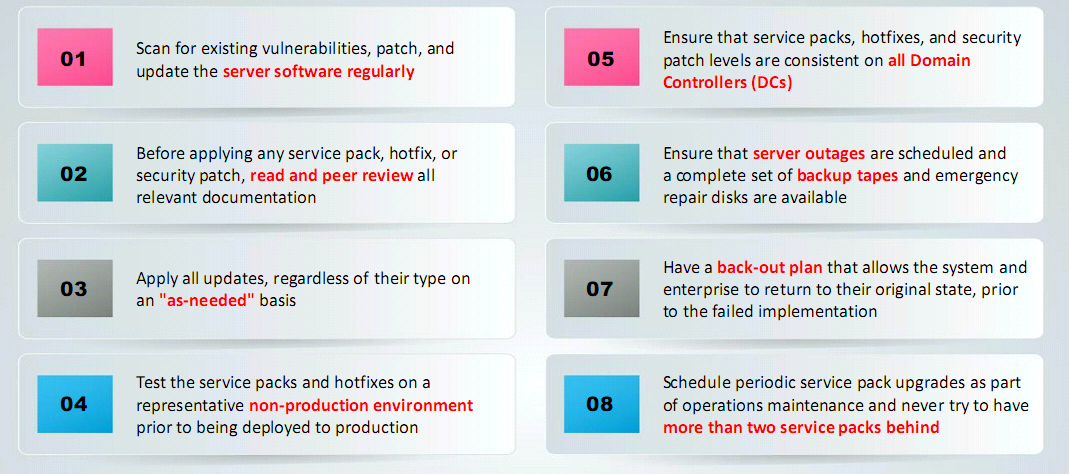
Protocols
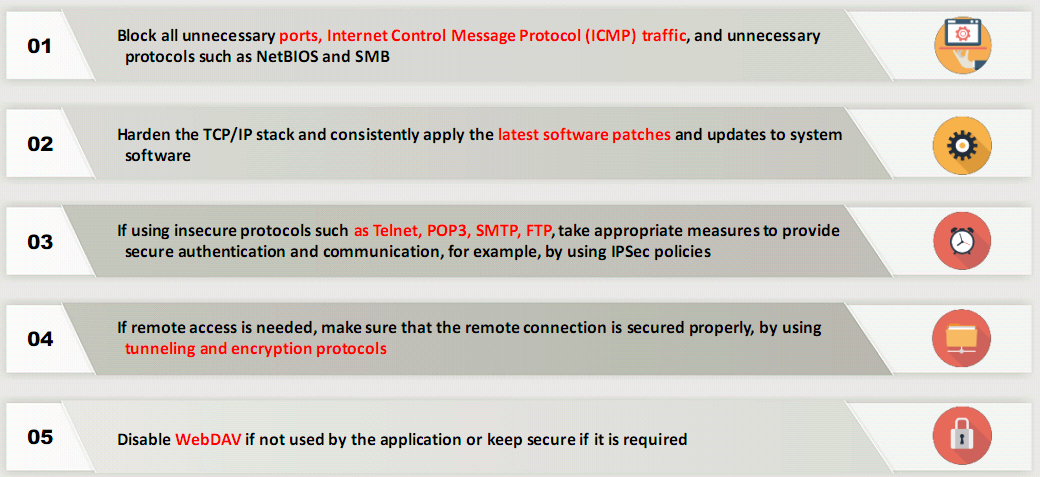
Accounts
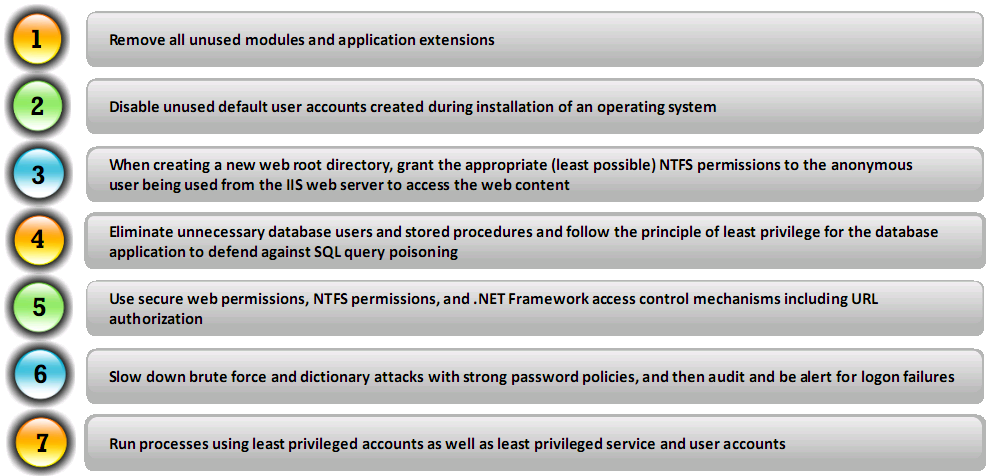
Files and Directories
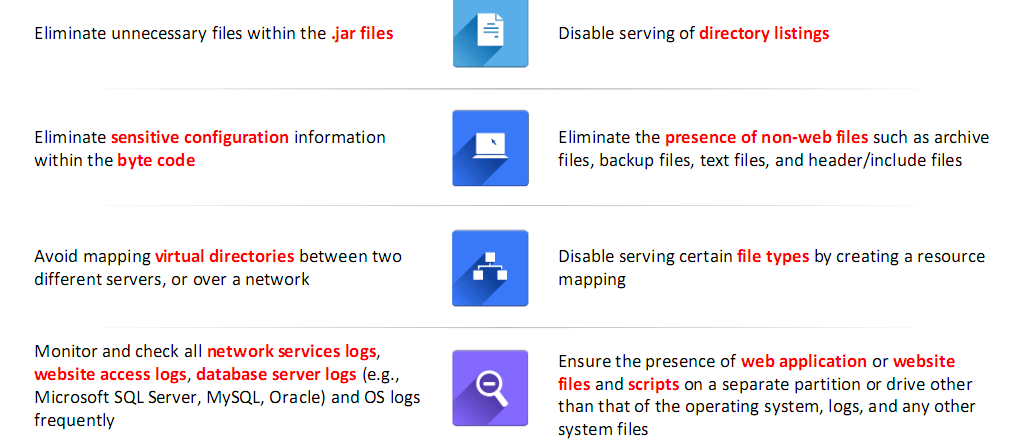
Detecting Web Server Hacking Attempts
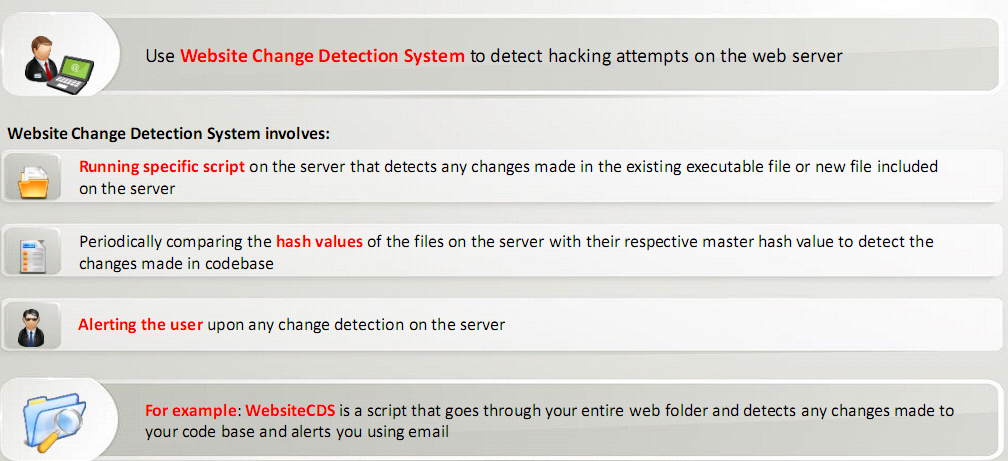
How to Defend Against Web Server Attacks
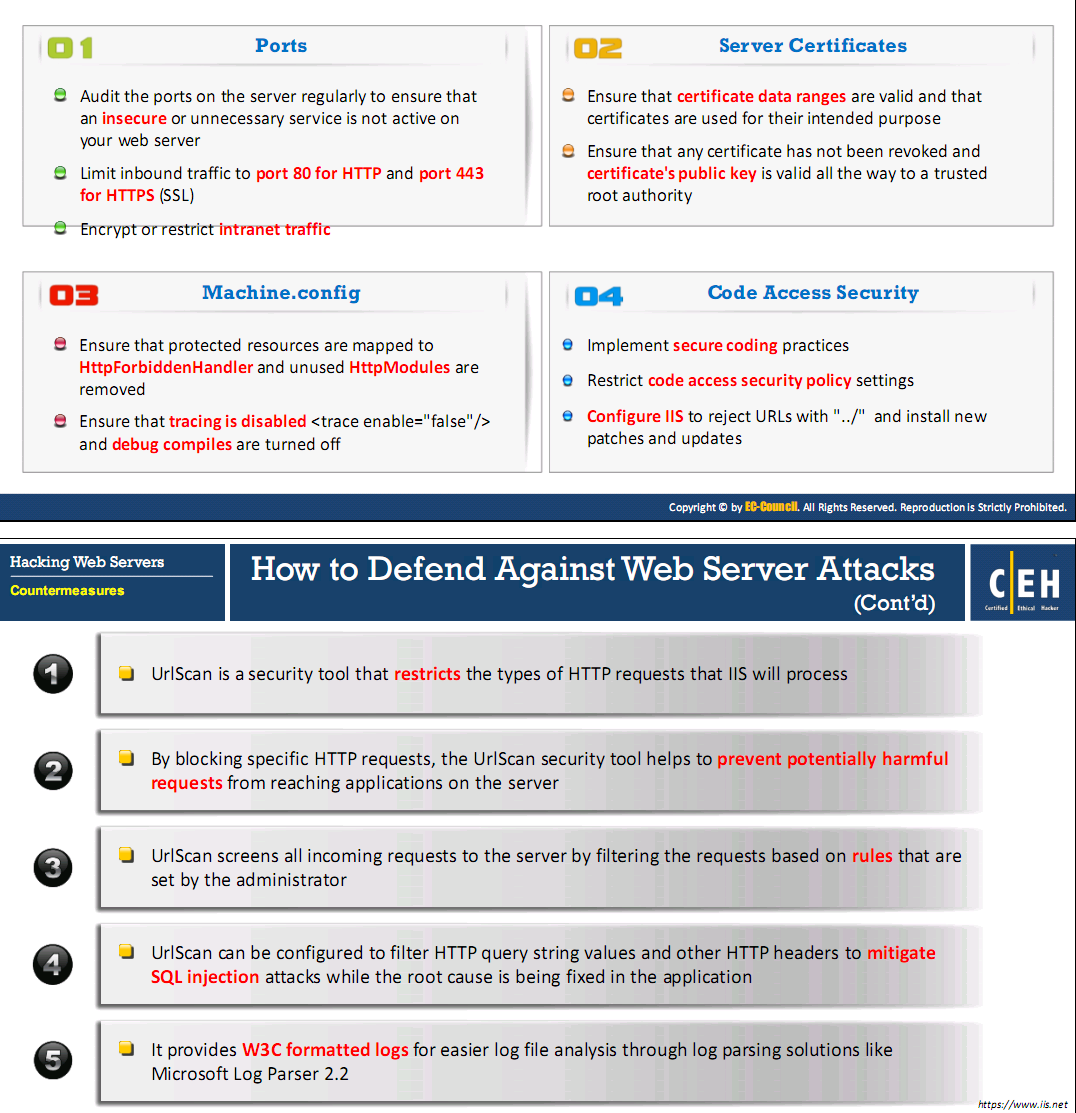
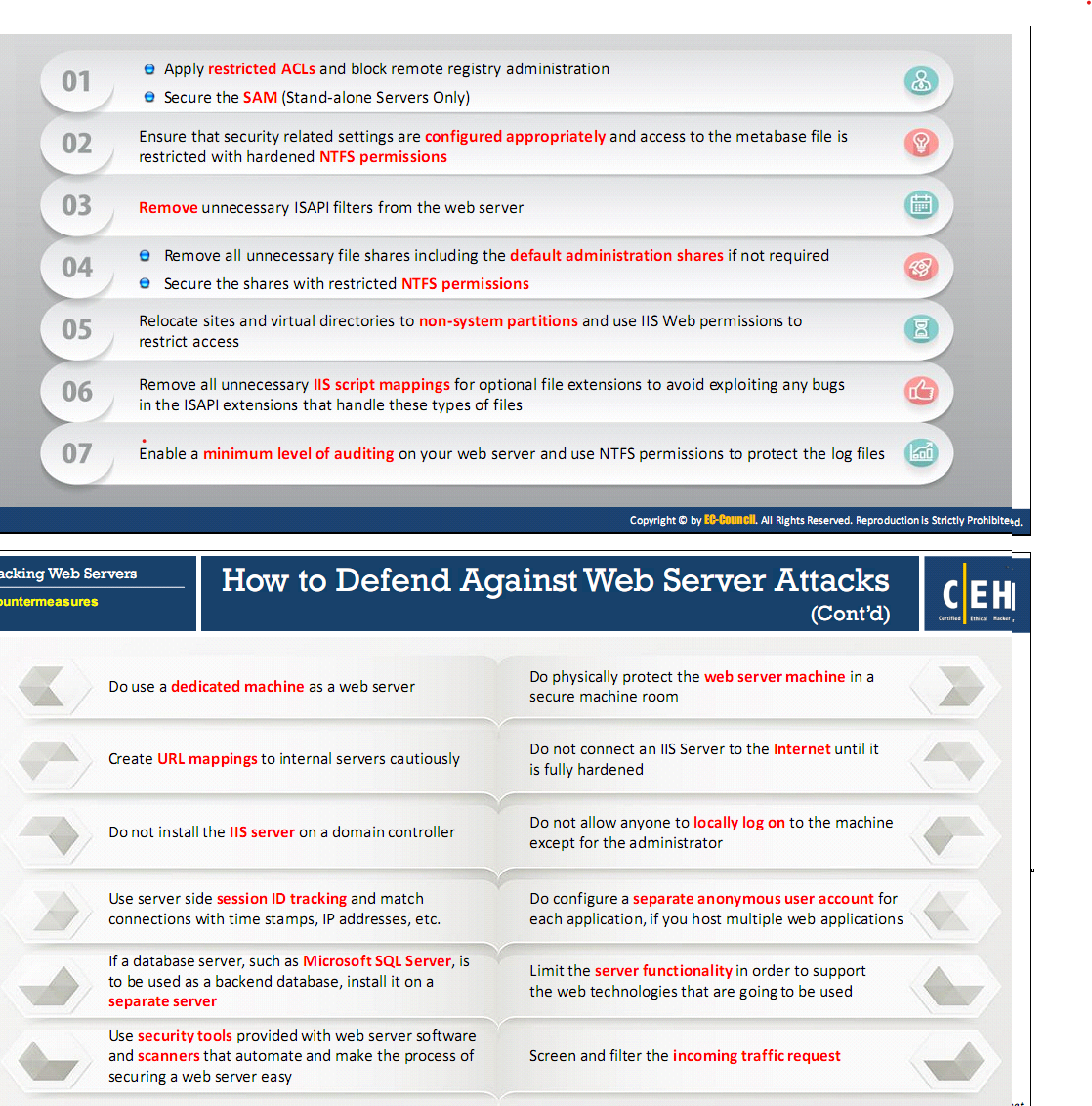
Defend against DNS Hijacking

Patch Management
Patches and Hotfixes
- Hotfixes are an update to fix a specific customer issue not always distributed outside the customers organization
- A patch is a small piece of software designed to fix a problem
- Hotfixes are sometimes combined as a set and called combined hotfixes or service packs
What is patch management
- Process used to ensure that the appropriate patches are installed on a system and help fix known vulnerabilities
Installation of a patch
